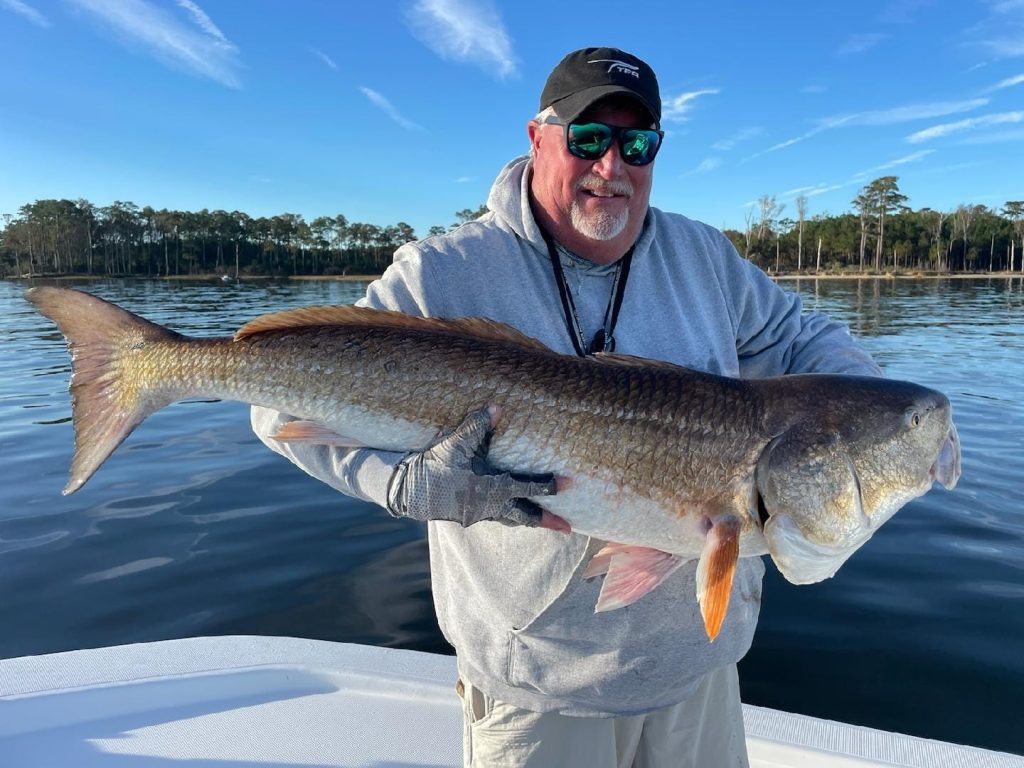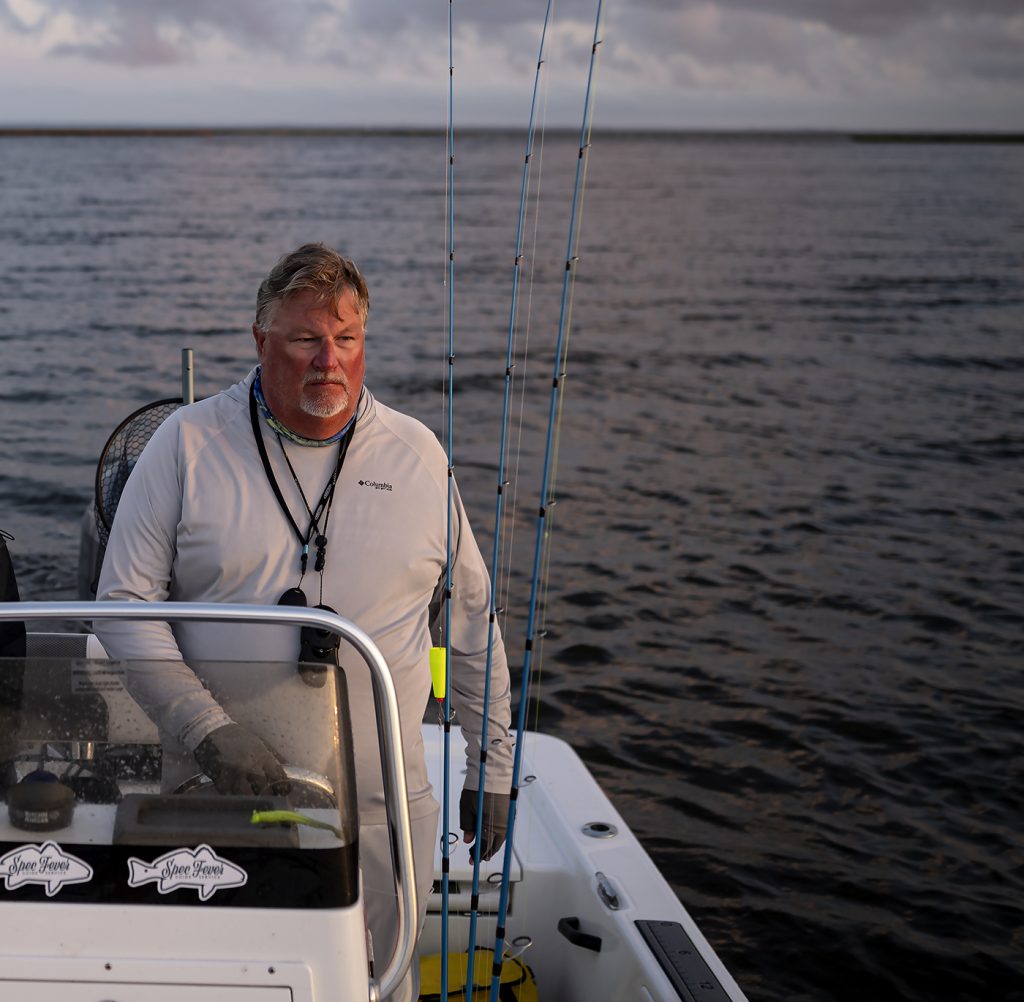
It happens that the staff here at Ahrex HQ goes fishing (regularly, in fact), but sometimes further from home than usual. Last fall Morten accepted and invitation from Gary Dubiel and our US representative, Steve Silverio, to join them both on a trip chasing huge redfish on the Neuse River.
Over to Steve:
“Called by its many names, redfish, channel bass, drum, spottail, puppy or
pumpkin, the red drum (Sciaenops ocellatus) is a formidable fish for the coastal angler. Naturally occurring along the Eastern and Southern Atlantic coasts, primarily from Virginia and the the Carolinas to Florida, the redfish also inhabits the waters along the Gulf coast states of Louisiana, Mississippi, and Texas where it is a highly prized gamefish.
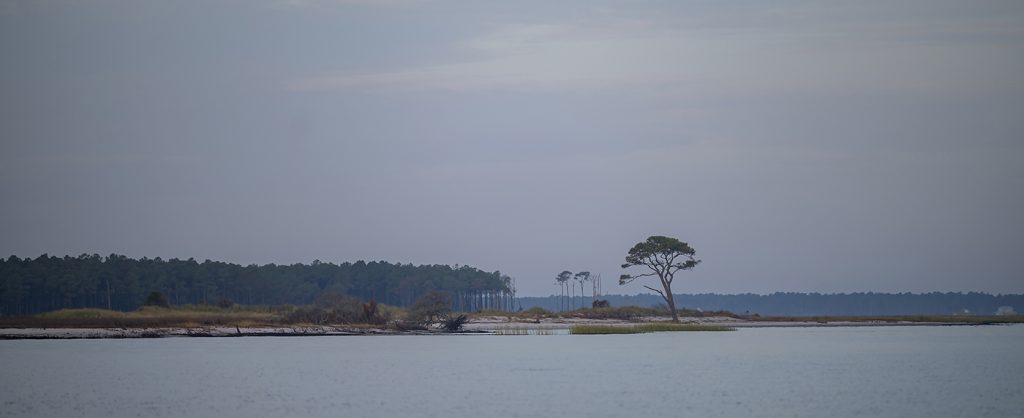
A beautiful place and remember, this is not a lake. It’s just a really, really big river!
One area that has become synonymous with the large “Bull” or old drum, often reaching over 18 kilograms or more is the area feeding the Pamlico and Albemarle sounds in North Carolina. Specifically the Neuse River, which is one of the widest rivers in the US, at 7 ½ miles (over 12km), which has one of the largest genetic strains of redfish, becomes the breeding ground for these behemoths during the Spring and Summer months of the year.
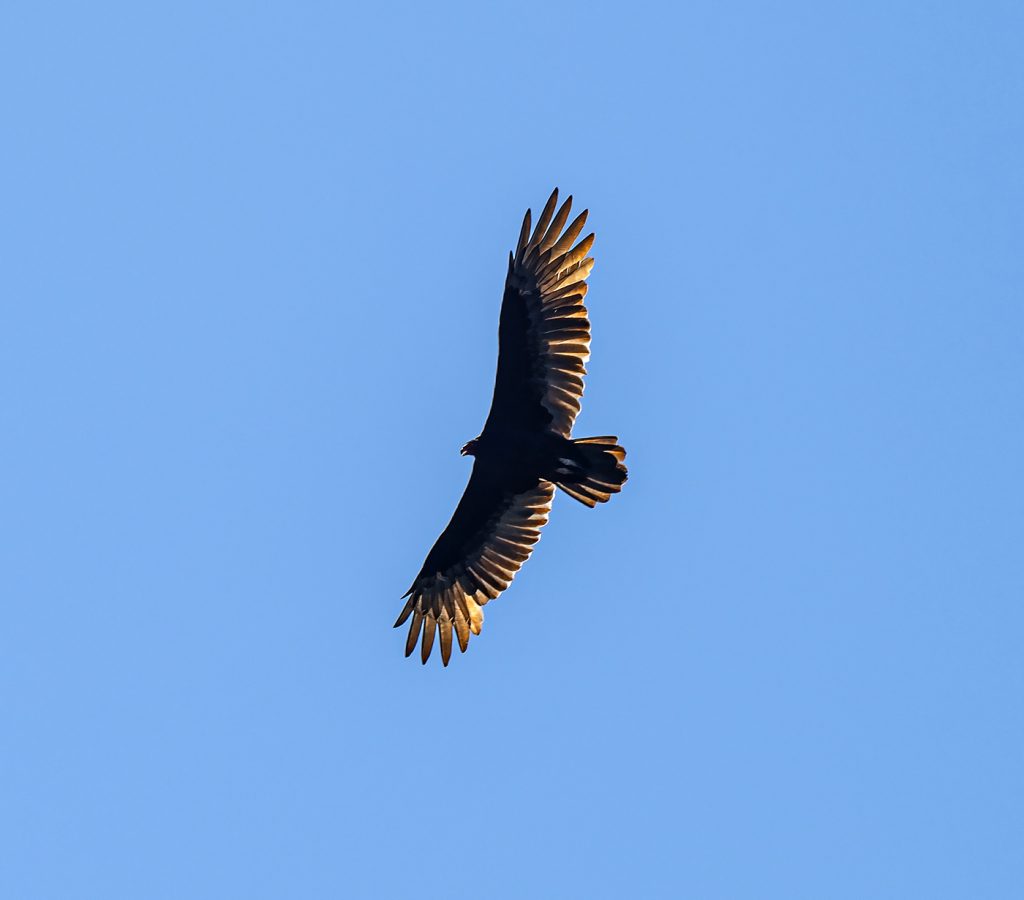
The wildlife is much more than big fish. If you look up, which can be hard enough, you might catch a glimpse of the elegant osprey, obviously also there to hunt fish. Probably not 30lbs redfish, though.
Gary:
“Mature red drum gather in the Western portions of the Pamlico Sound, the lower sections of the Neuse and its sister river, the Pamlico, every August and September to reproduce. This event provides anglers access to hundreds of thousands of some of the largest reds on the planet, some in excess of 30 pounds.”
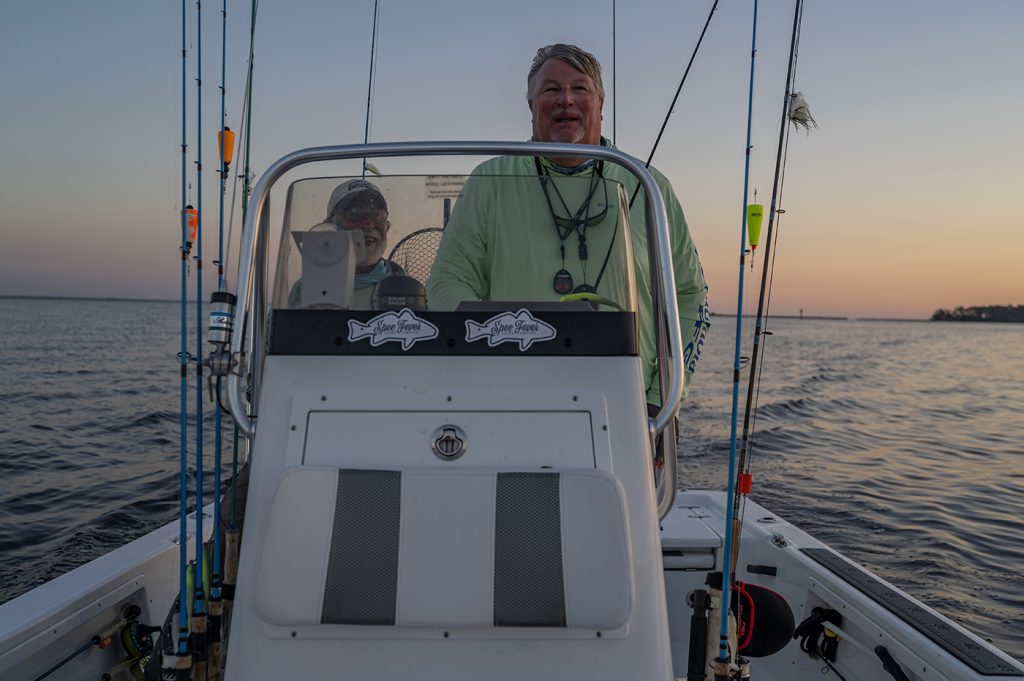
Gary Dubiel at the helm. One tell tale sign of a busy guide is a weathered look and the “permanent-sun-glass-burn” on the face.
Gary has guided in the area since 1999. He has decades of experience catching these monsters and initially, as the channel bass were known to be solely evening predators, he had to buck conventional wisdom and create a successful method of taking drum for the light tackle and longrodder as well.
“By the Sumer of 2012, I was able to consistently catch trophy redfish with
artificial lures and by far the most successful was a popping cork/swimming bait combo. This led to the next challenge of how to translate what I was doing on conventional tackle to the fly.”

The conditions were challenging, when Morten visited Gary. And yet, Gary was able to put Morten onto some big reds. This might not qualify as a trophy, but it’s a big red none the less.
Gary’s creation of his signature “Pop-N-Fly” has been a significant advancement in the ability of fly fishermen to take not only drum, but many saltwater and freshwater species as well. Subsequent developments in several successful fly patterns like his Lil’ Haden and Popping Shrimp have proved themselves time after time.
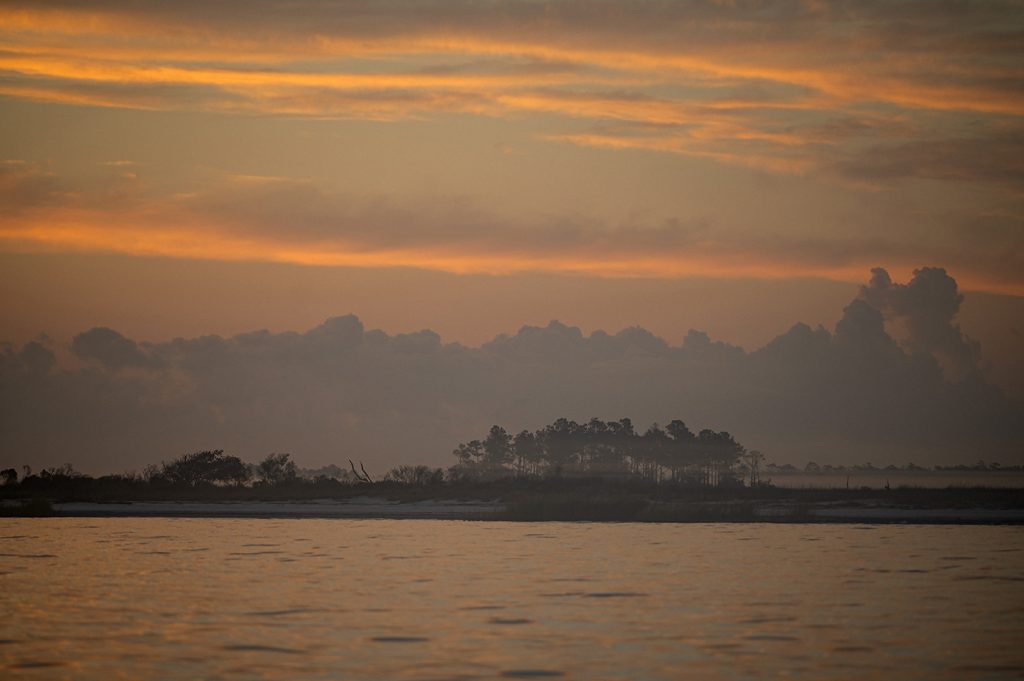
When he’s not guiding, Gary keeps him self occupied in other ways, one is appearances at fly shows and his schedule is busy already. If you’re interested in hearing more about Gary’s innovative techniques, the fishing, the services he provides, you can meet Gary in person at these events.
Virginia Fly Fishing Fest, January 13th and 14th.
At 9:30 Gary will be in Casting Pond 1.
At 11.00-12.30 Gary will talk about his “Advanced tactics for reds and speckled trout”. Shenandoah River Lecture Area.
3.30 “Gary Dubiel fishing in Poland”
and finally, on Sunday 14th, Gary will repeat the lecture on advanced tactics.
Gary world hard to promote this exciting fishery. On top of all this, you can catch Gary tying his signature flies.
